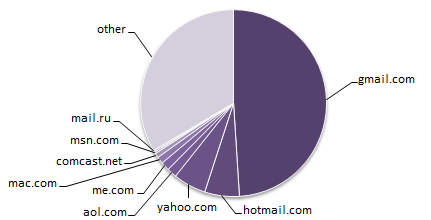
Email can be one of the most powerful ways to engage with your users, and can serve a multitude of purposes. It can be used as a way to highlight selected content (weekly/monthly newsletters, ‘year in review’, etc.), provide a service to users (analytics breakdown of visits to your profile/favorites page), or re-engage with users (new feature announcements, etc.). Here at Artsy we use all of these kinds of emails and have found them to be a very valuable asset. However, best practices for template layout and CSS (keeping in mind the variety of devices and screen sizes that your users have) are quite different from, and very far behind, the current HTML5 standards and practices for making beautiful web pages. In this article, I’d like to present some techniques I’ve successfully used at Artsy to create emails that look good on your browser or mobile device, in some of the most popular email clients out there.




